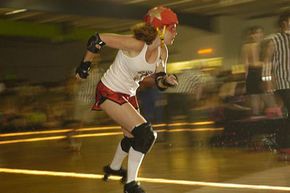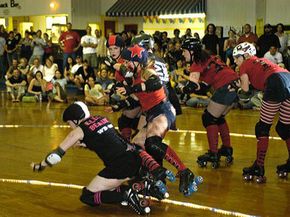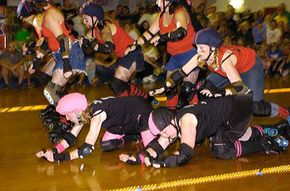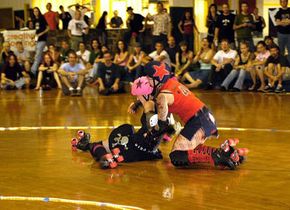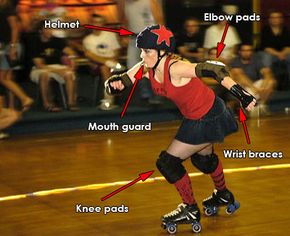The classic roller derby never completely disappeared. A few teams remained active after the sport's decline, and some leagues formed to keep the traditional co-ed format alive. But the sudden explosion in roller derby's popularity has centered on new, women-only leagues.
The first of these leagues formed in Austin, Texas in 2001. Since then, over 30 leagues have appeared across the United States. These organizations are largely skater-
owned and operated. As Atlanta Rollergirls founder Tanya Hyde points out, "It's all about the league working as a team, gathering resources from within the league, making use of the talents that all the women are bringing to the table. The needs of the skaters are first and foremost. [By being skater-owned and -operated] you ensure that the skaters will always be well taken care of."
Participants are building their teams from the ground up, taking inspiration from other leagues as they go. Hot Legs Hooligan explains, "We basically have a start-up company, based around something nobody has really ever seen, staffed entirely by volunteers. It's like starting your own country."
Women's leagues usually play on the flat surfaces found in most public roller rinks and mark the track with cones and lights, though a few have bought or built banked rinks like those used in the original sport. "[G]irls skated where they could on whatever surface they could find, and flat tracks were simply more available," says Susan B. Agony. "There are probably quite a few girls who are ready and willing to get into how one style is superior to the other, but I think it is the love of the game that had engaged most of us, whether we are skating flat or at an angle."
Since every league is the product of its skaters' efforts, no two are exactly the same. But a few traits are common across the board. Skaters tend to wear uniforms that give their team a distinct identity. They also adopt a persona for their competitions, complete with a skate name -- usually a double entendre.
The names and uniforms lead some people to compare roller derby to professional wrestling. According to Big Red, "A lot of people come out and they think it's scripted, and they think that it's like wrestling, but it's not…It's very unpredictable and we don't even know what's going to happen sometimes. Sometimes you don't even realize you fell until you hit the ground."
Next, we'll look at the training and practice that prepares players for this unpredictability.
